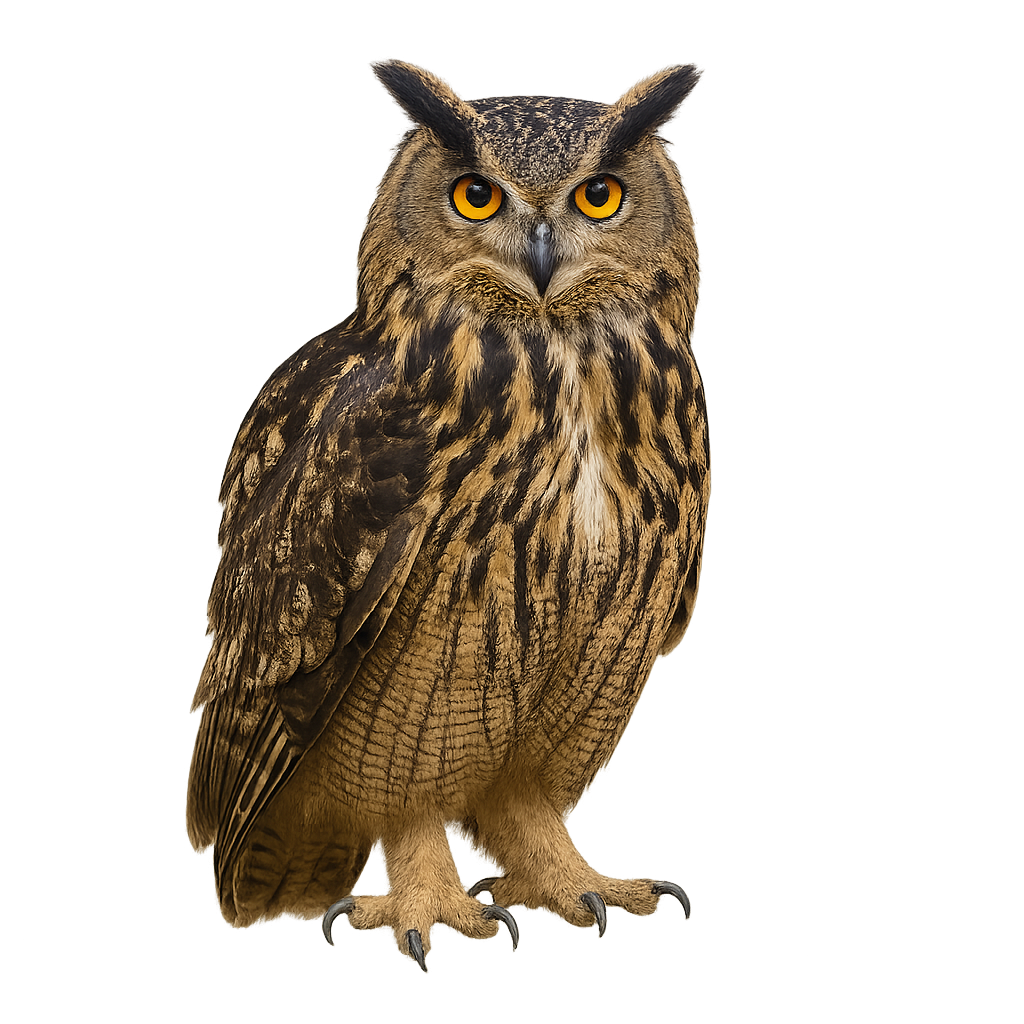Your wildlife photography guide.
Explore the eurasian eagle-owl in detail, study its behavior, prepare your shots.
Where to observe and photograph the eurasian eagle-owl in the wild
Learn where and when to spot the eurasian eagle-owl in the wild, how to identify the species based on distinctive features, and what natural environments it inhabits. The WildlifePhotographer app offers tailored photography tips that reflect the eurasian eagle-owl’s behavior, helping you capture better wildlife images. Explore the full species profile for key information including description, habitat, active periods, and approach techniques.
Eurasian eagle-owl
Scientific name: Bubo bubo

IUCN Status: Least Concern
Family: STRIGIDAE
Group: Birds
Sensitivity to human approach: Suspicious
Minimum approach distance: 50 m
Courtship display: January to March
Incubation: 34-36 jours
Hatchings: March to May
Habitat:
Forests and mountains
Activity period :
Mainly active at night, generally discreet during the day.
Identification and description:
The Eurasian Eagle-Owl is a large nocturnal raptor, one of the most imposing owls in the world. It measures between 60 and 70 cm in length, with a wingspan of 1.6 to 1.8 meters, and weighs between 1.5 and 4.5 kg. Its plumage is primarily brown, with white and black mottled patterns, and its eyes are bright orange, giving the bird a piercing gaze. It also has tufts of feathers on its head that resemble ears, which give it a distinctive appearance. The Eurasian Eagle-Owl primarily inhabits forests, mountains, and rocky areas in Europe, Western Asia, and the Middle East. It is an opportunistic hunter, feeding mainly on small mammals, birds, and sometimes reptiles or amphibians. The Eurasian Eagle-Owl is a solitary and territorial bird, known for its powerful and deep calls, often heard at night. While the species is not endangered, it may be affected by the destruction of its natural habitat and human disturbances.
Recommended lens:
300 mm – adjust based on distance, desired framing (portrait or habitat), and approach conditions.
Photography tips:
Use a telephoto lens to photograph from a distance, respecting the owl’s discreet nature.
Photograph early morning or late afternoon when soft light enhances its powerful plumage.
Look for it on cliffs, coastal edges, Mediterranean scrublands, or open forests.
Be patient and discreet to avoid disrupting its natural behavior.
IUCN status: Least Concern. Respect its habitat and minimize disturbance, especially during the breeding season.
The WildlifePhotographer App is coming soon!
Be the first to explore the best nature spots, track rutting seasons, log your observations, and observe more wildlife.
Already 1 429 wildlife lovers subscribed worldwide

